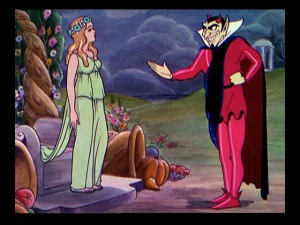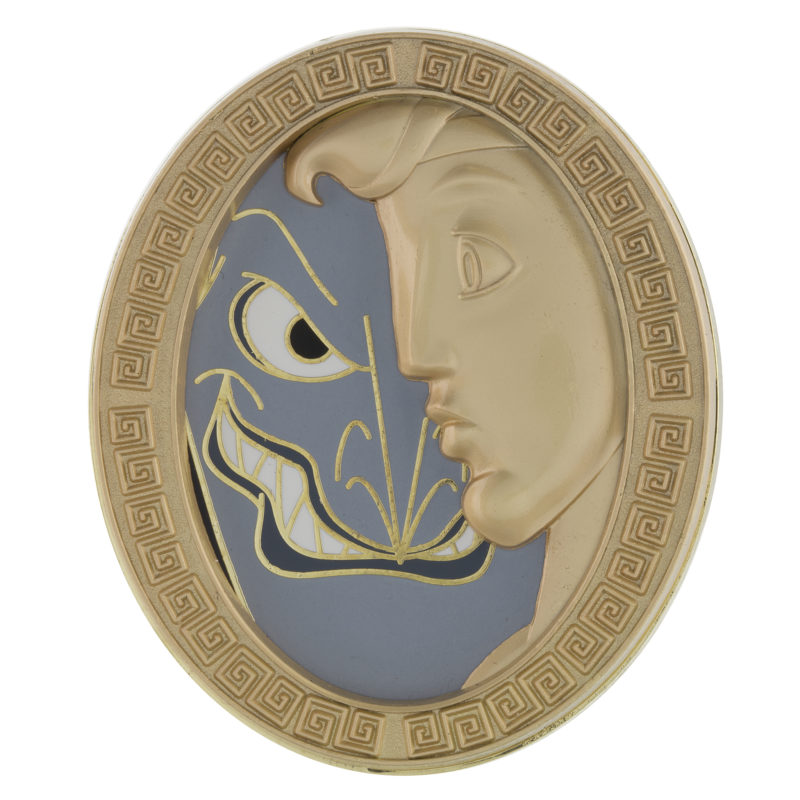Disney Silly Symphonies: Who Persephone Could Have Been
The best part about vintage Disney cartoons is that each one has a surprise. Some have surprisingly dark motifs, and others can show a racist edge. There’s a reason why the cartoons have any blackface references edited out for re-release.
Others show how the Disney animators did their best to meet artistic challenges. While they could animate plants, animals, and even dwarves quit well, sometimes people were harder to grasp. But with the shorts released in theaters, animators could stretch their horizons, and figure out how to animate people. At least, they could try.
Hades and Persephone

“The Goddess of Spring” was a dry run for Disney animators, to see if they could animate a humanoid female well enough for Snow White. It came out in 1934, about three years before Snow White would premiere. While Persephone’s animation has dated over the years, it showed progress. Progress is something.
The cartoon condenses the Greek myth of Hades and Persephone into nine minutes. In the original myth, the death god Hades kidnapped Persephone but earned her mother Demeter’s wrath. Demeter caused winter, forcing the king Zeus to intervene or all life on Earth would starve. Hades agreed to release Persephone, but he fed her three pomegranate seeds so that she would spend three months per year in his realm. Tumblr suggested that Persephone willingly entered the Underworld to get away from her mother, but there’s no evidence for that sadly apart from a rewrite of the story in The Dresden Files. It’s still a problematic myth, but Hades is the mellowest of the gods when it comes to women.

For the record, Hades has no demonic Devil stuff in his source material. He’s death. Period.
We get about a third of that here. Demeter makes no appearance, and Hades has demonic aspects. Instead, Persephone controls the spring, and her disappearance causes winter. She and Hades actually talk out that she’s not happy because he kidnapped her and she wants to go home to tend to the animals and plants. Still, Hades bargains that she comes half the year so he won’t kidnap her again. That’s . . . better?
In theory, the short probably would have done better if given a higher budget and more run time. Persephone has a lovely singing voice but gets a few lines, compared to Hades and the narrator. We could learn why Hades thought kidnapping a woman was a good idea especially since he made her miserable. Some Greek sensitivity readers could have pointed out it’s in poor taste to imply that Hades is the devil because he’s just doing his job as death. The counter-argument is the trope Everyone Hates Hades, where we turn death gods into villains because we fear death.
Agency and Independence
Who is Persephone in this version? The only goddess we see. She has no mother to fight for her, and no Zeus as an advocate. Instead she sings for herself when given a chance to speak. When she dances, the flowers grow. Heck, the short is named after her. Even so, spring has no power against death. She politely turns down Hades after greeting him, but he doesn’t listen. The man just swoops with ease.

Being underground makes her unhappy, because Hades robbed her of agency. Her body language is slumped and upset. When he gives her a choice, she takes it, and smiles for the first time in the realm of death.
The main animation problem with the short is that Persephone makes her entrance dancing like a rag doll. Her limbs flop back and forth. Even so, it lends to the idea that she’s not human, but rather the personification of spring. Spring is bouncy and chipper, reviving the flowers and trees after a long winter.
If Disney ever rebooted this short, the producers should make it twenty minutes so we can see a Persephone that fights for herself and compromises better with Hades. We could also see a Hades that isn’t the devil, but is death. Death comes for all of us, and that’s why we fear the phenomenon. But also Hades was a jerk here, as he was in the myth.
This spring feels colder. I swear it shouldn’t be this cold. But at least we have treasures like this to remark on, as 2019’s spring brings in the frost.


